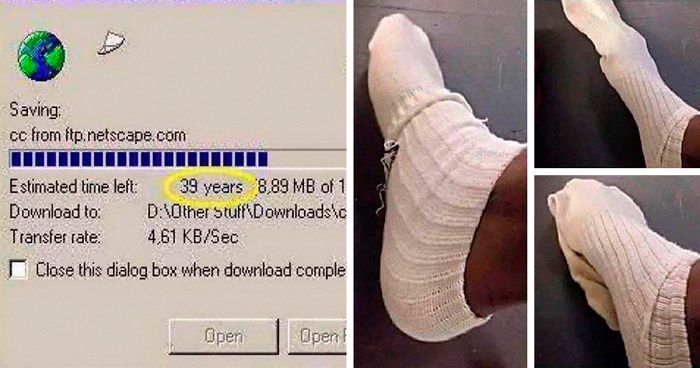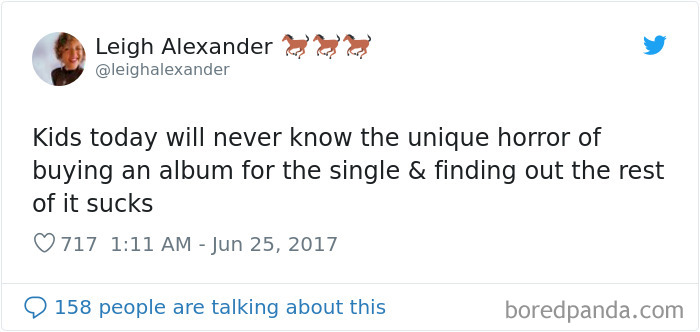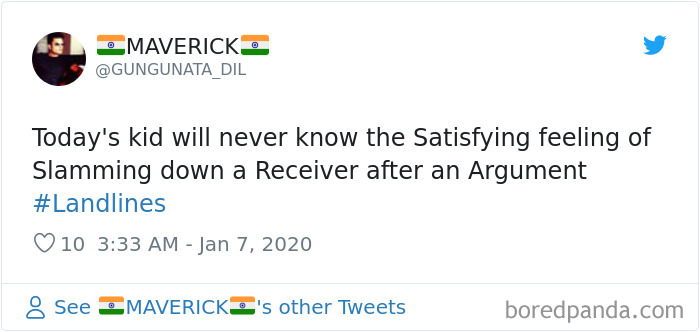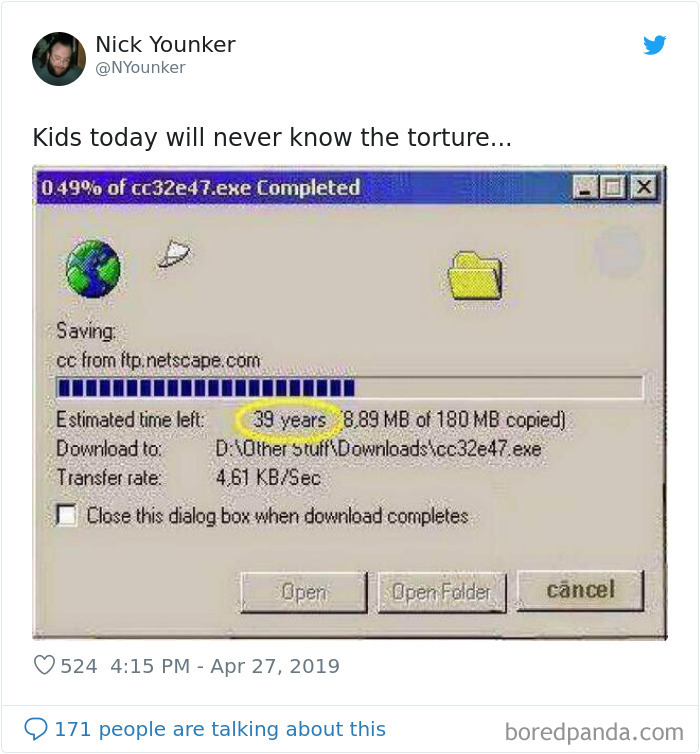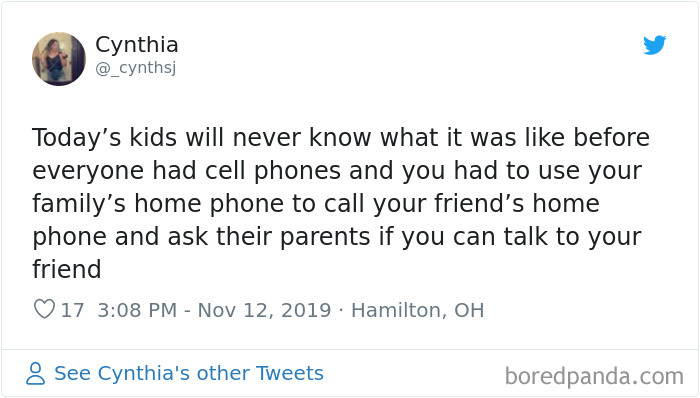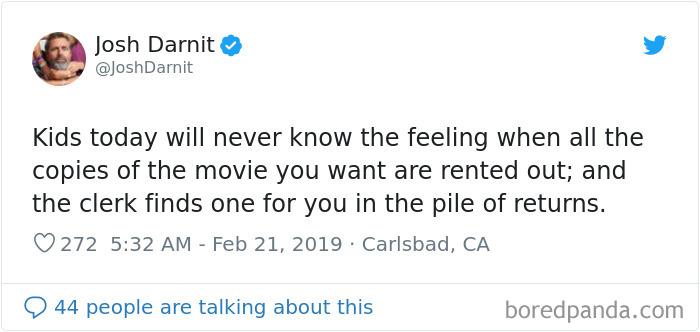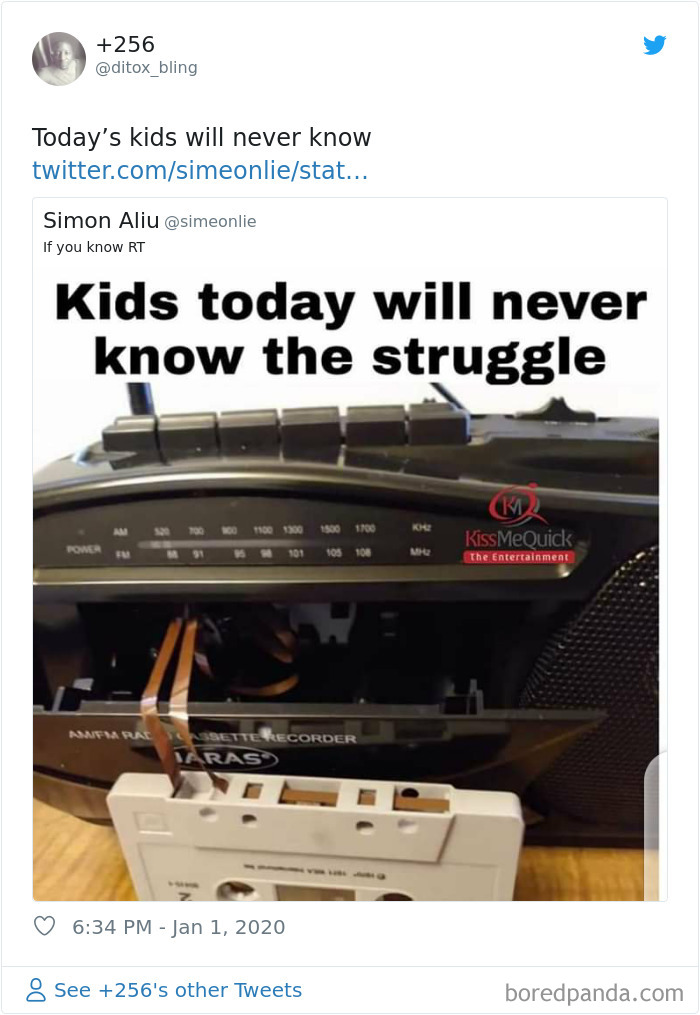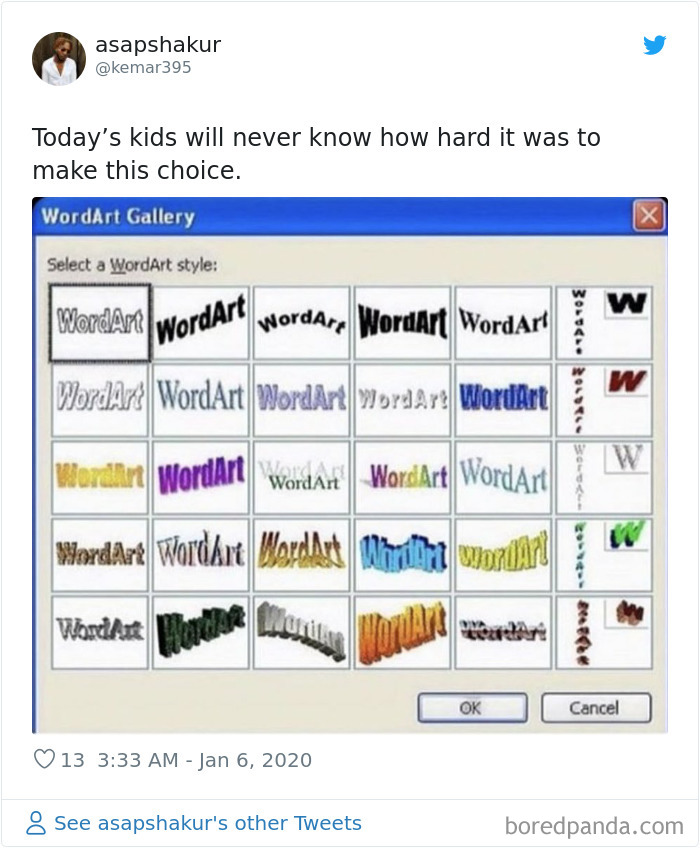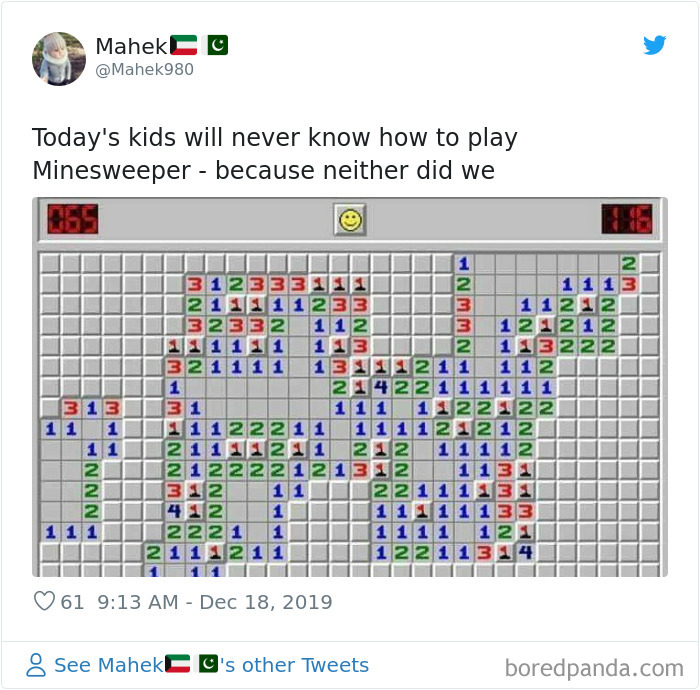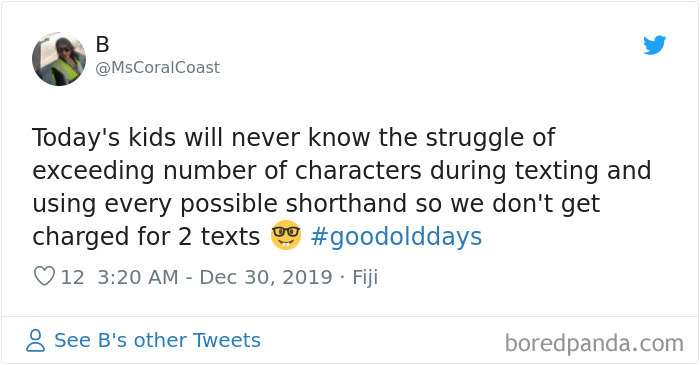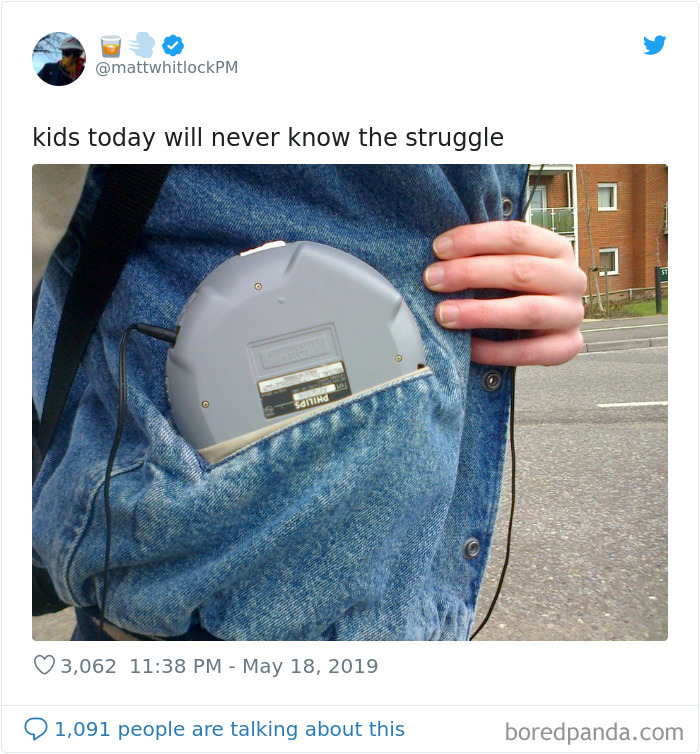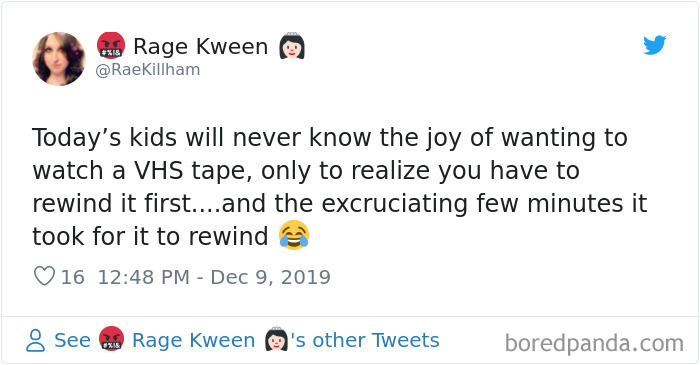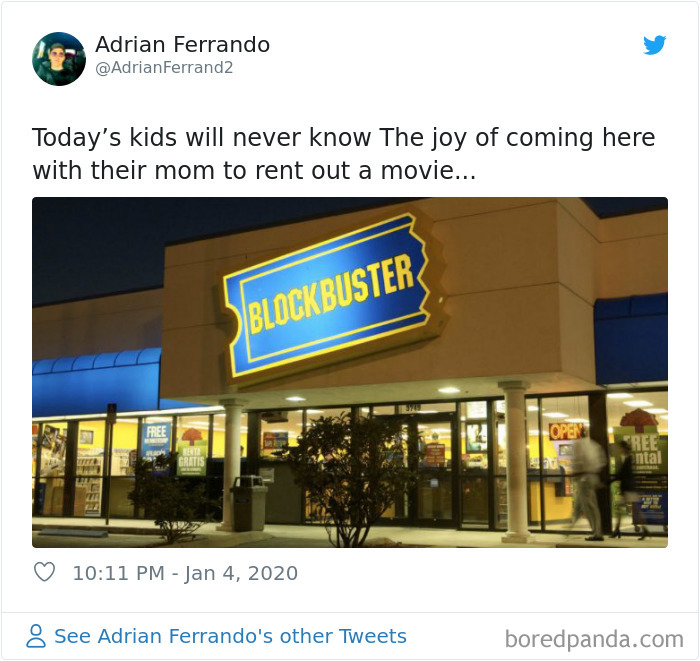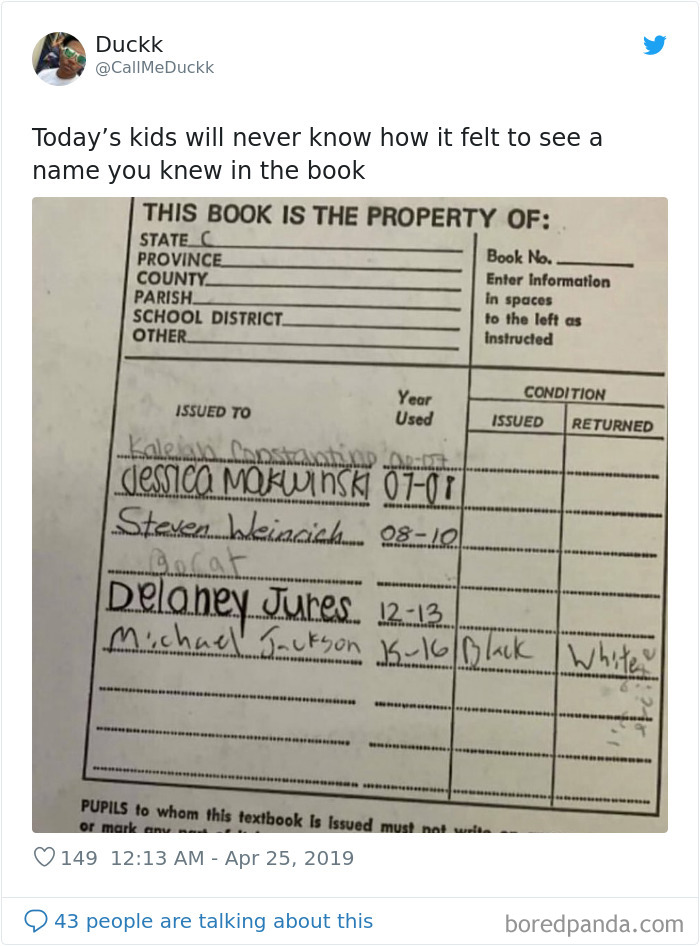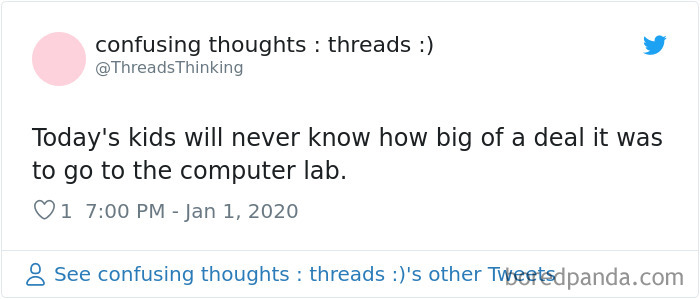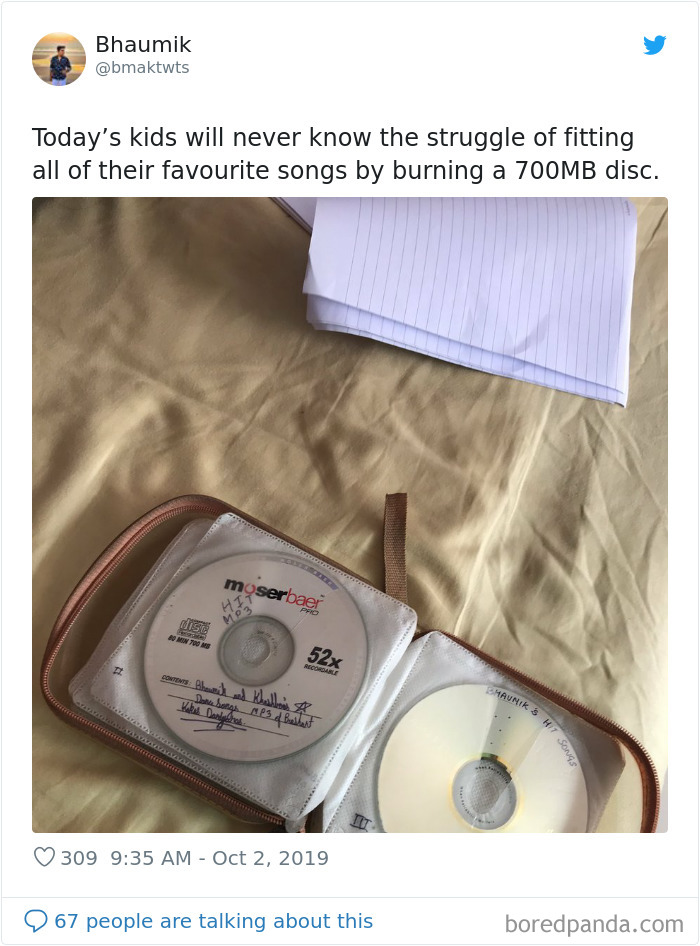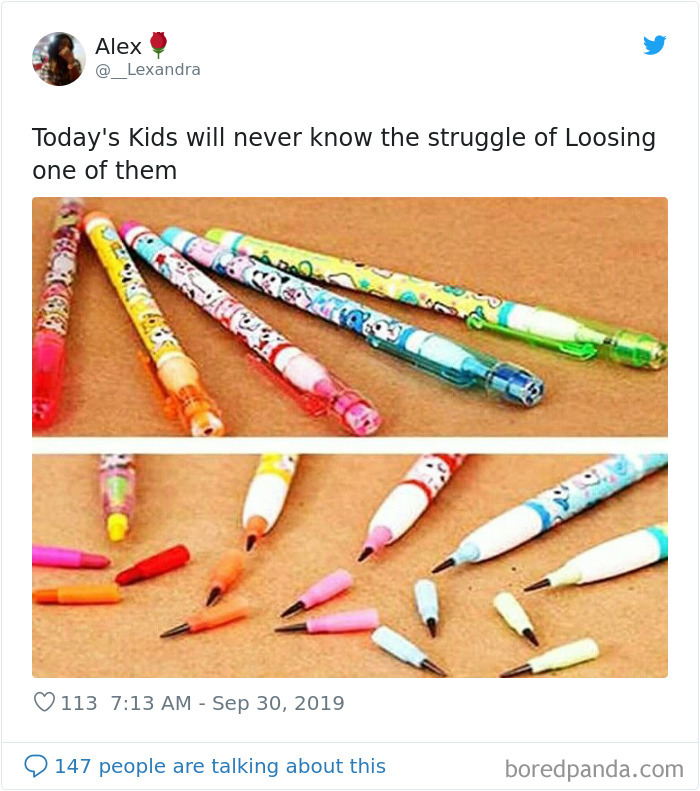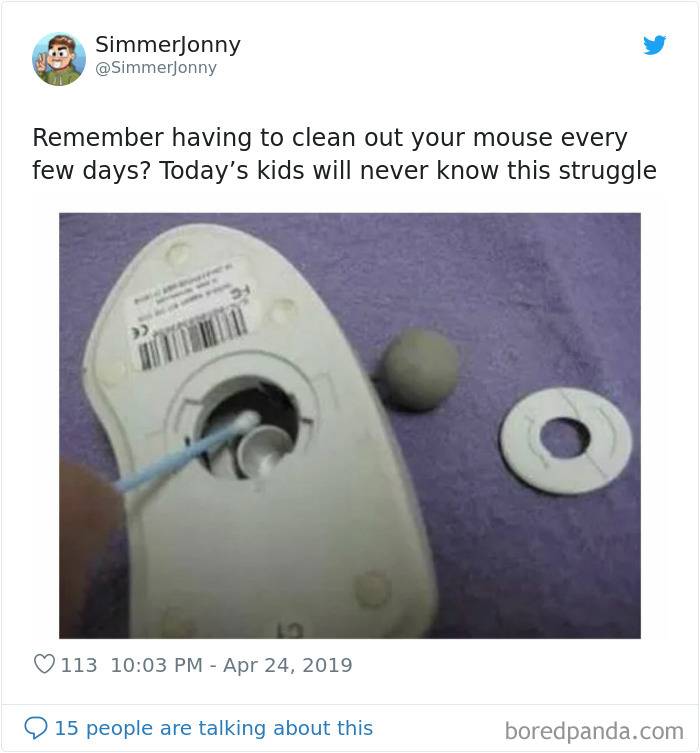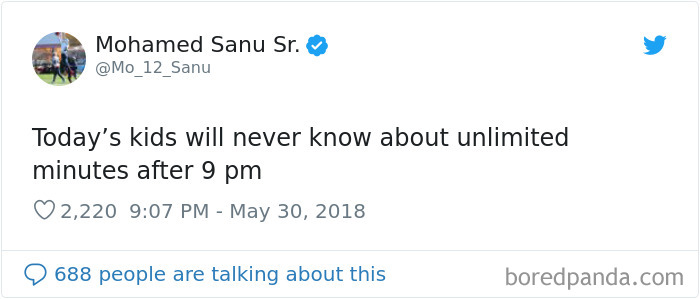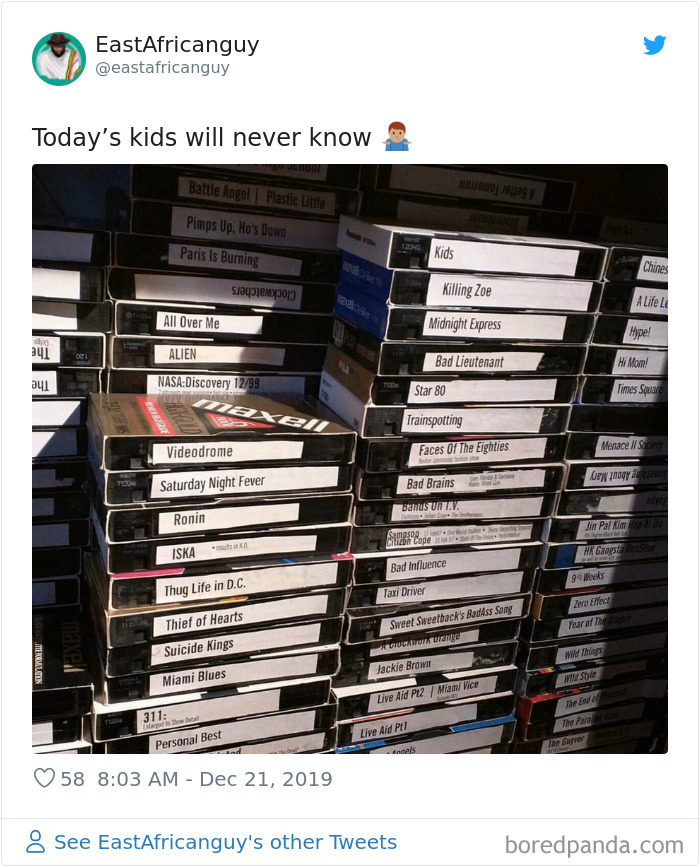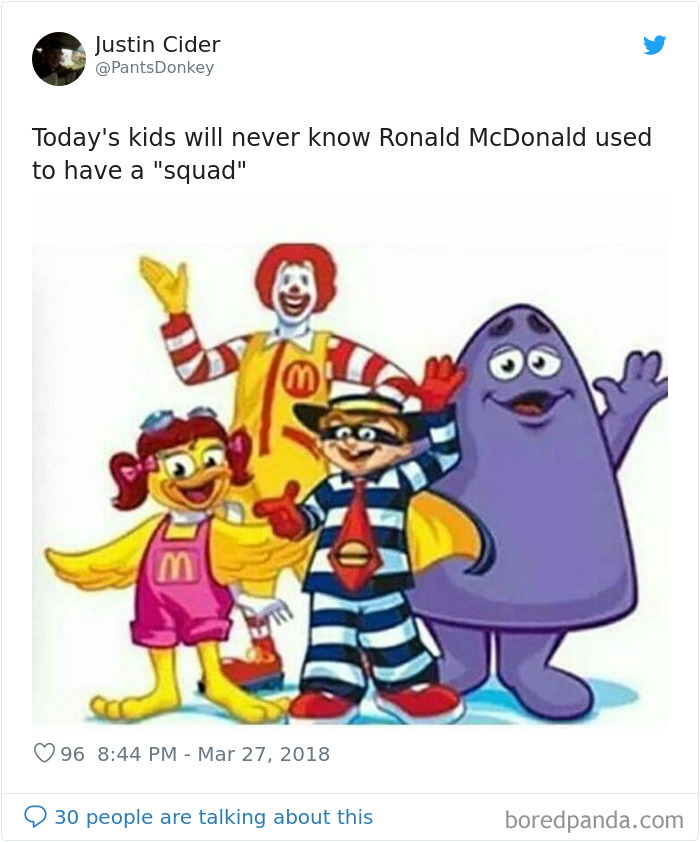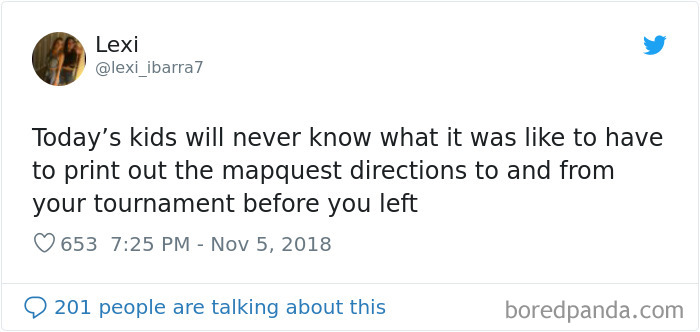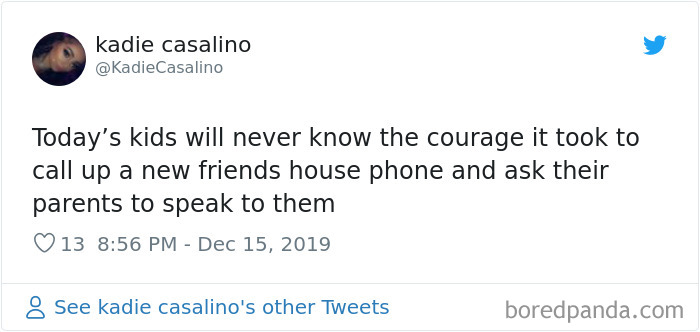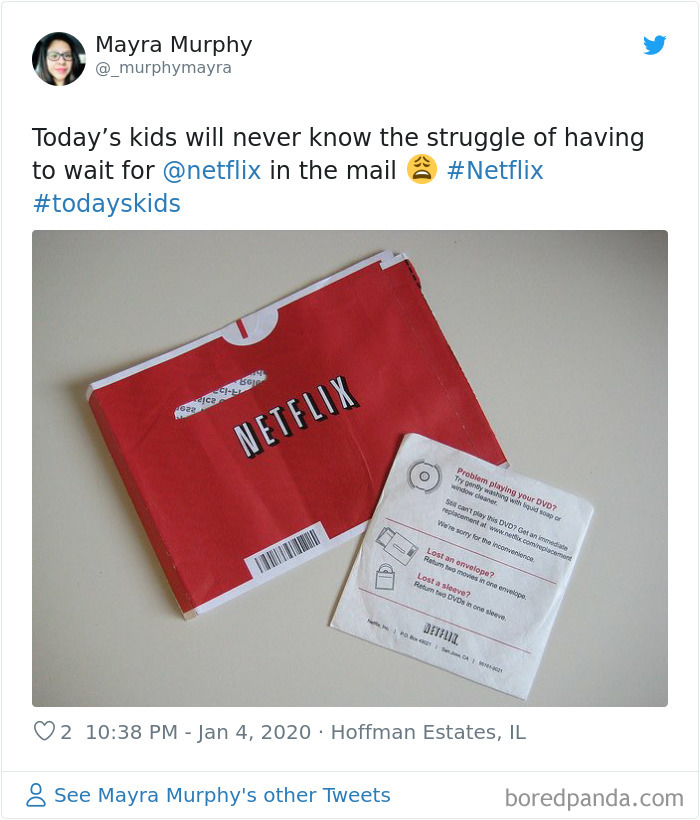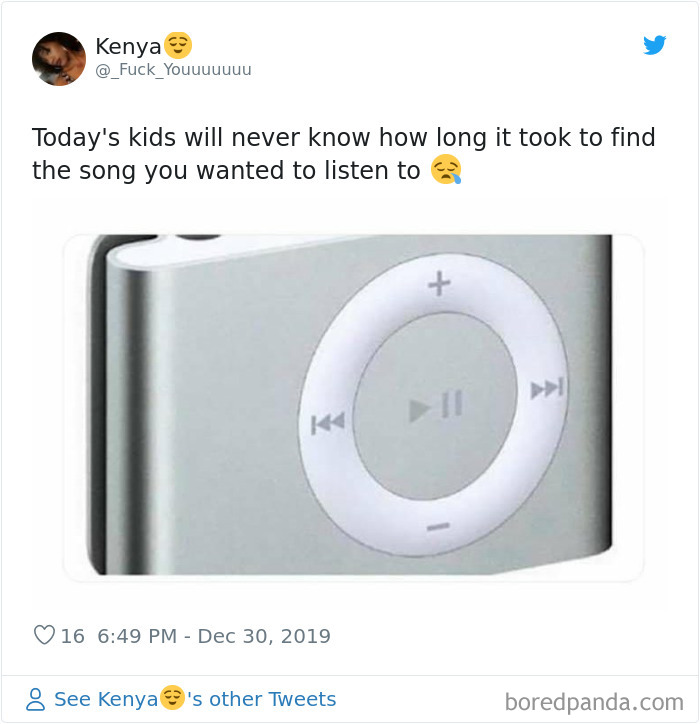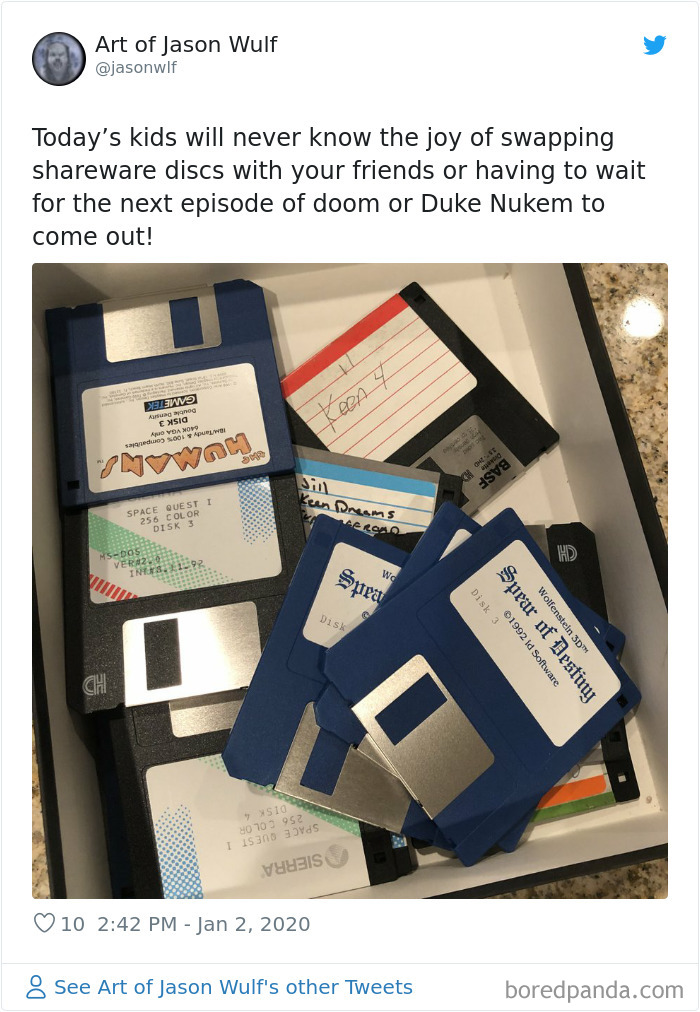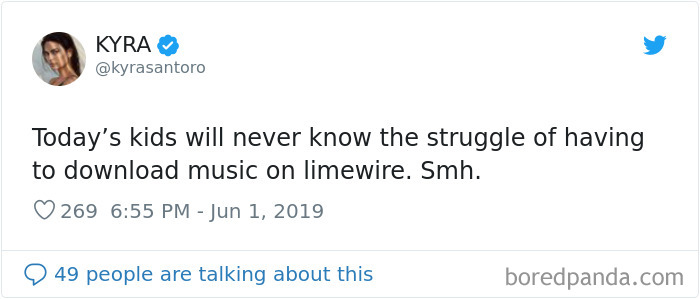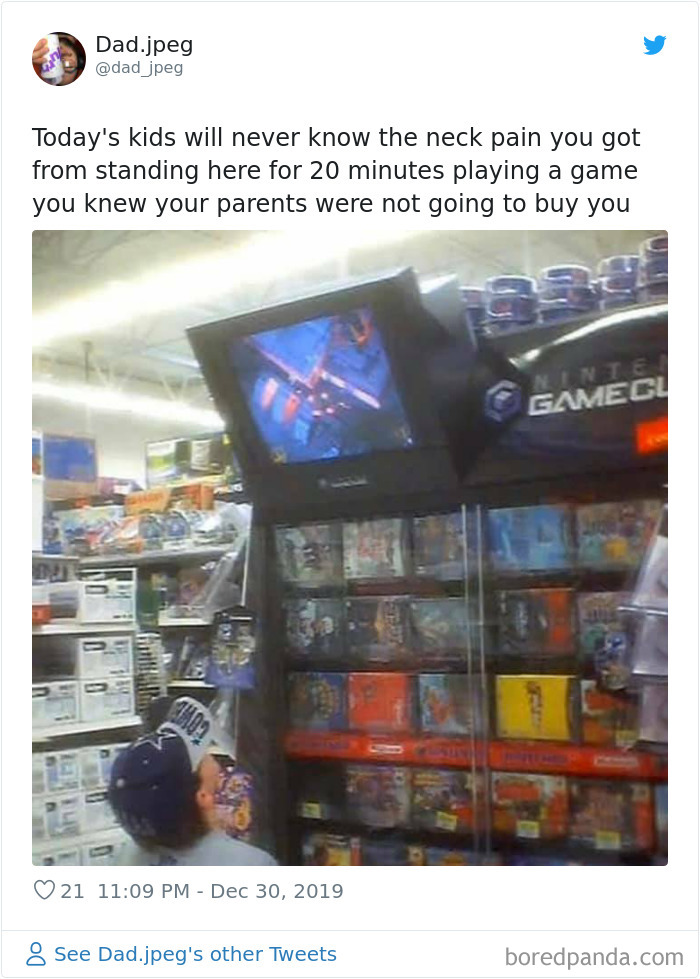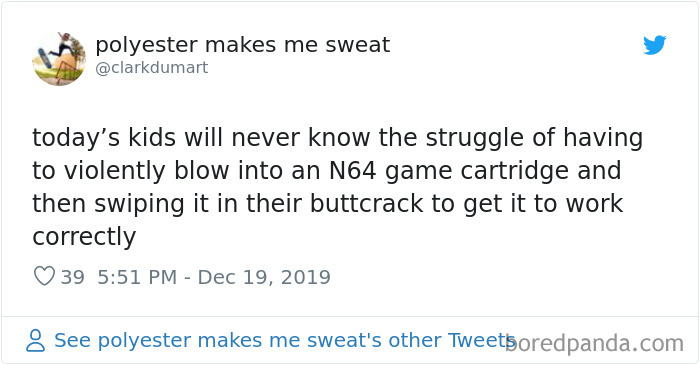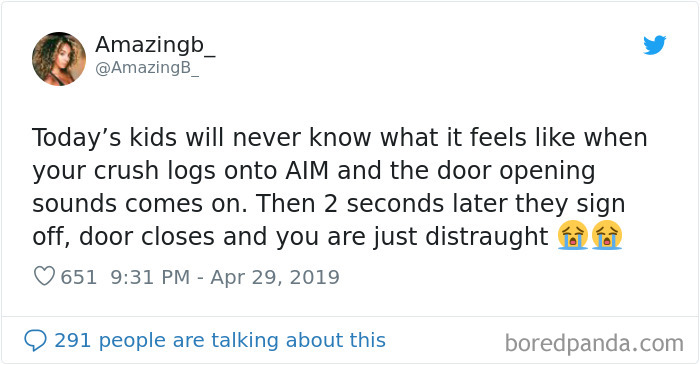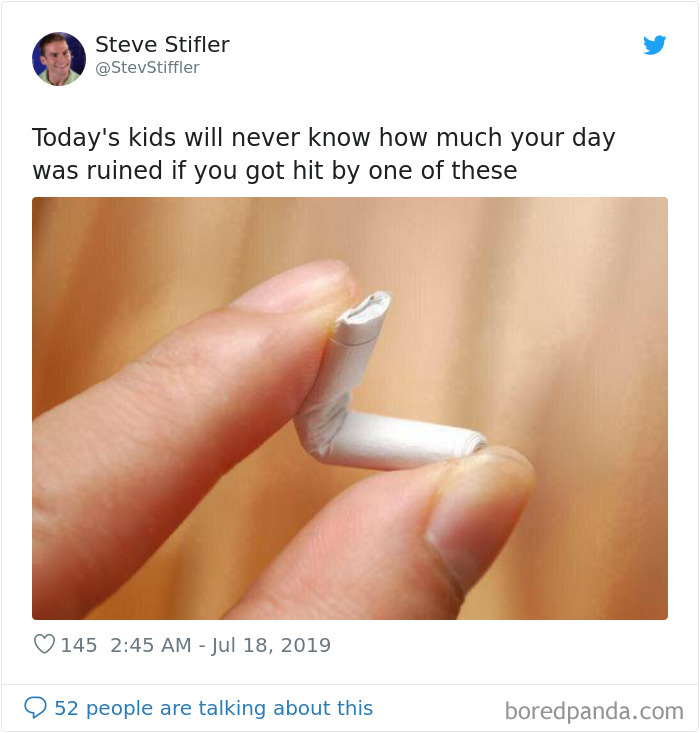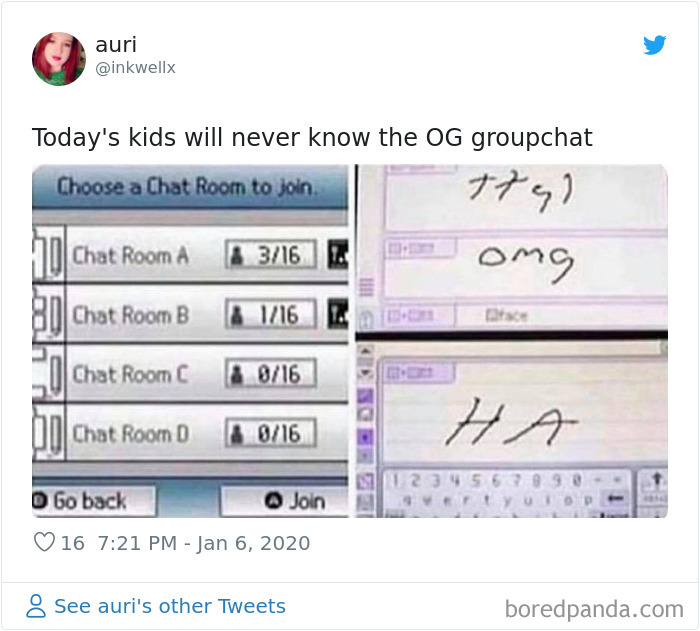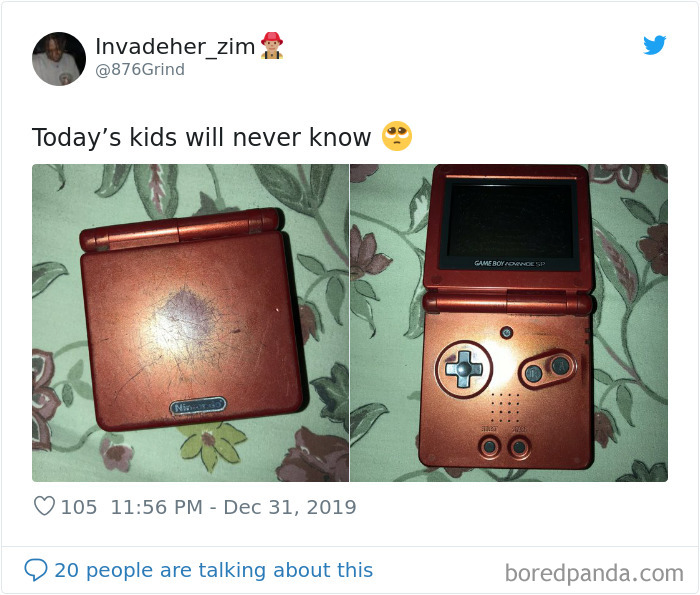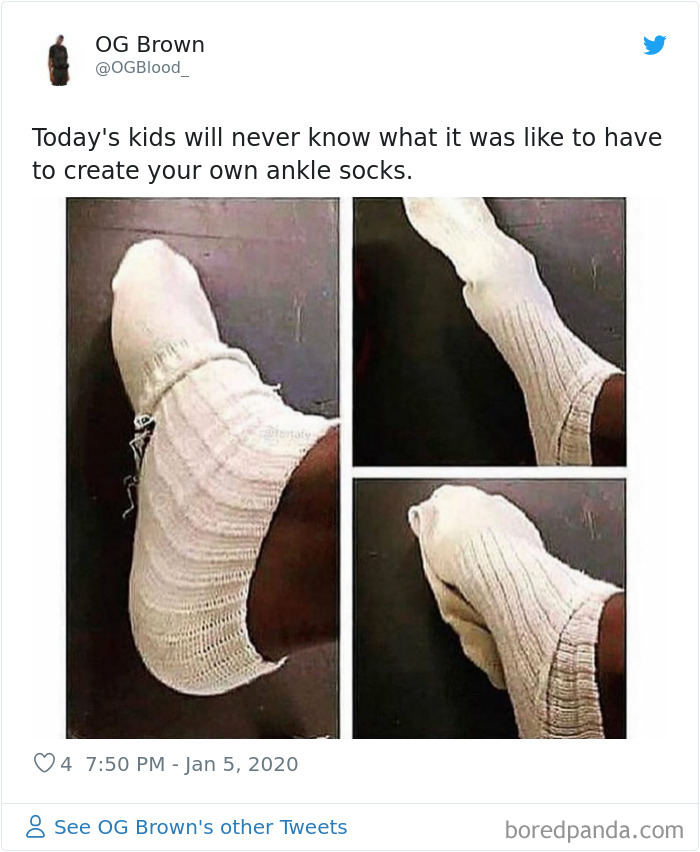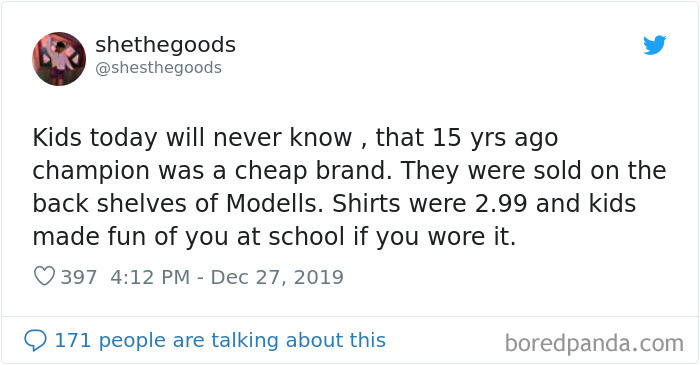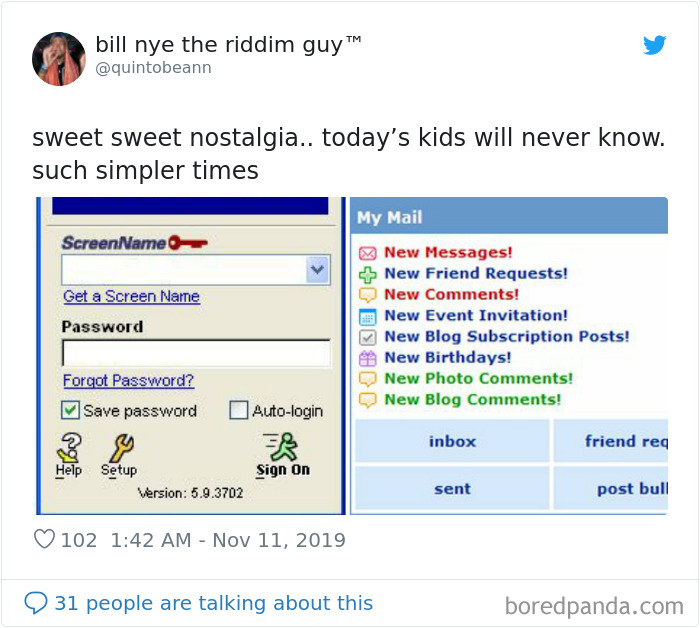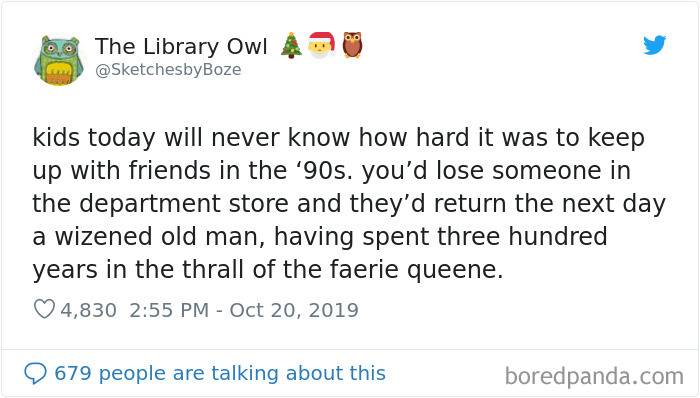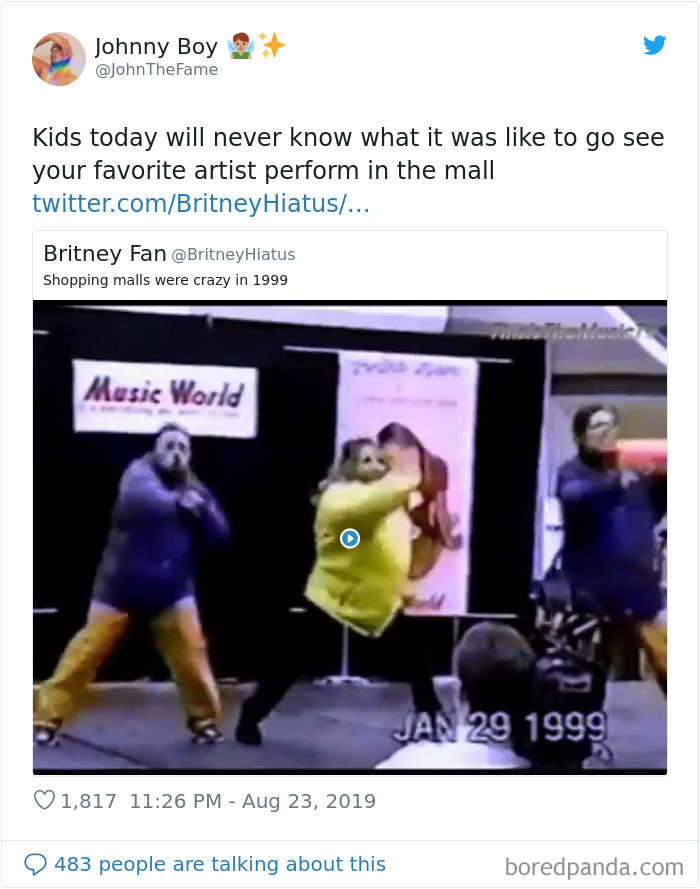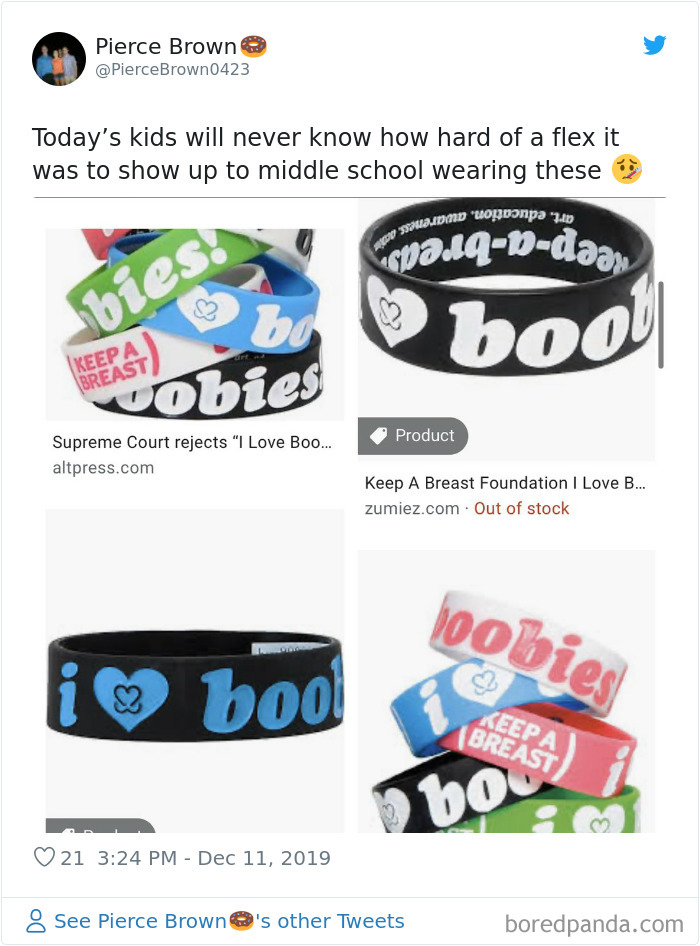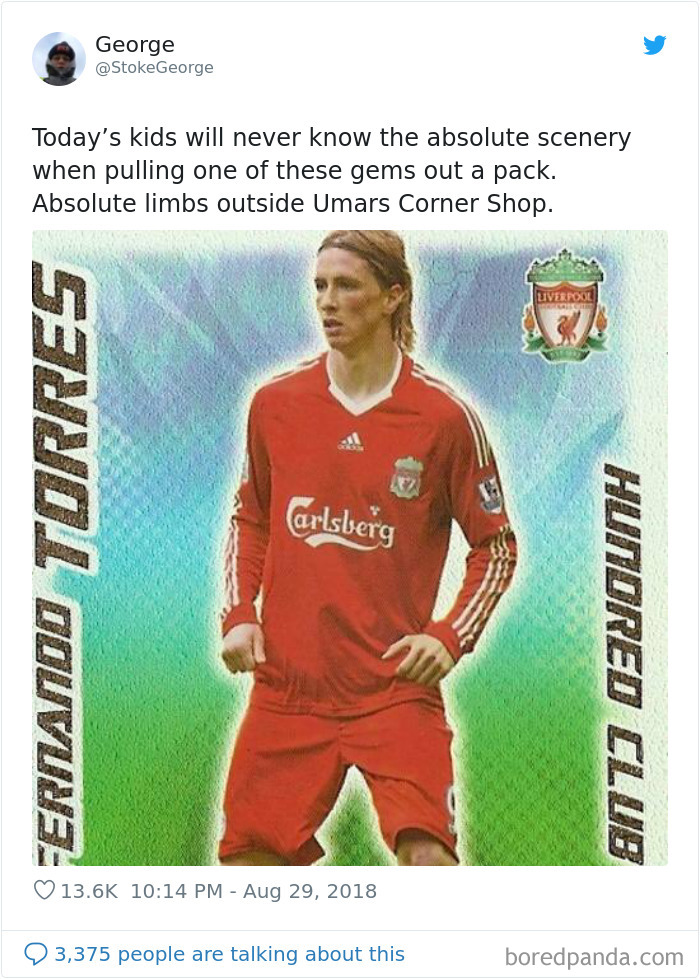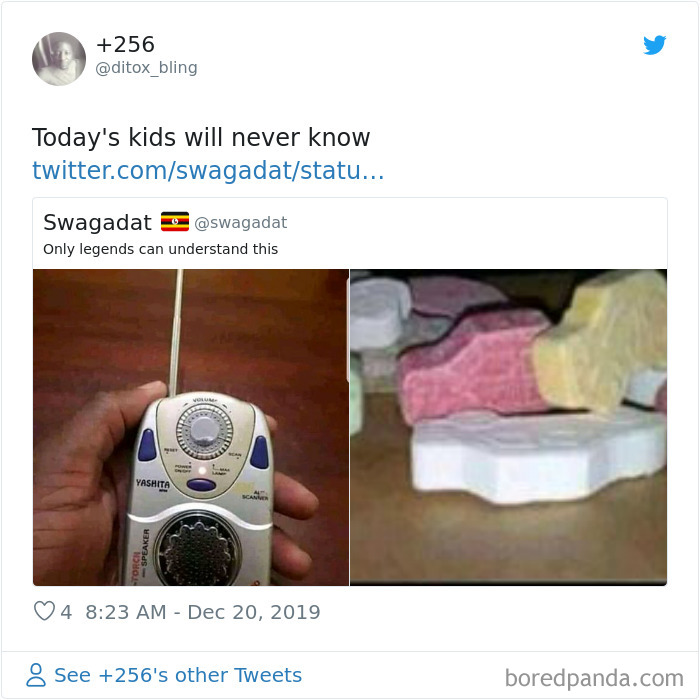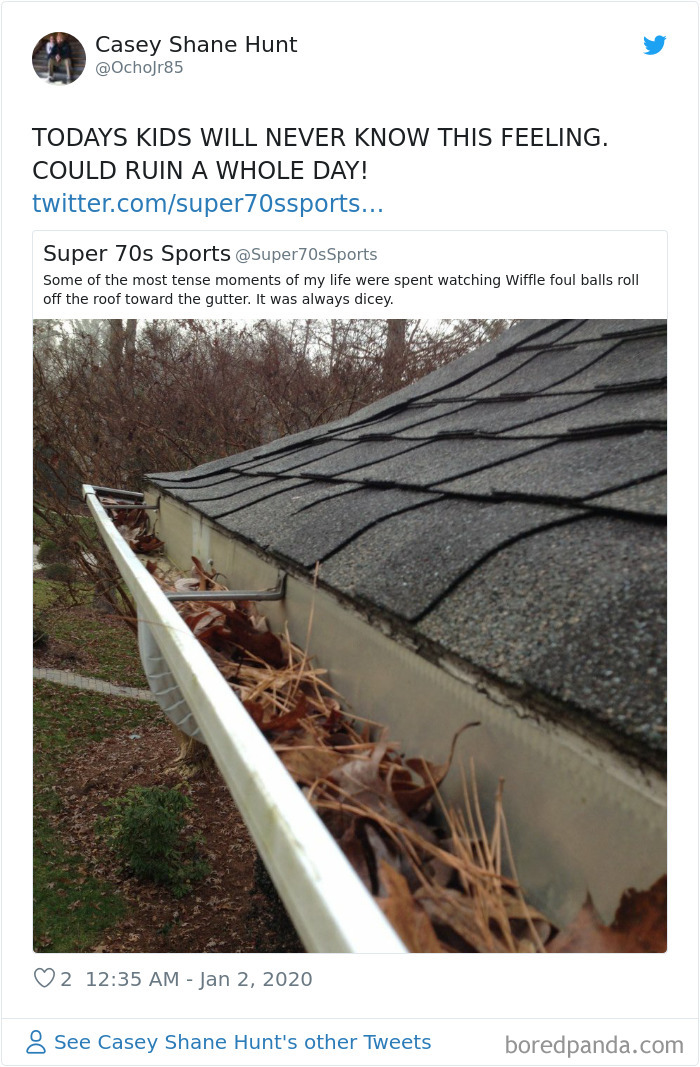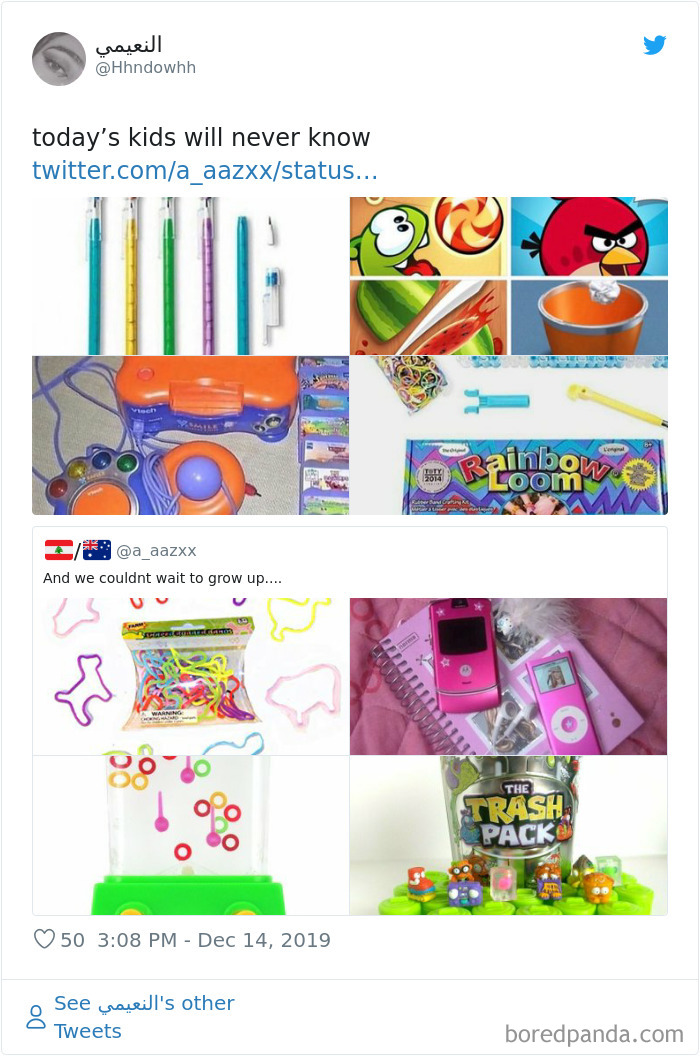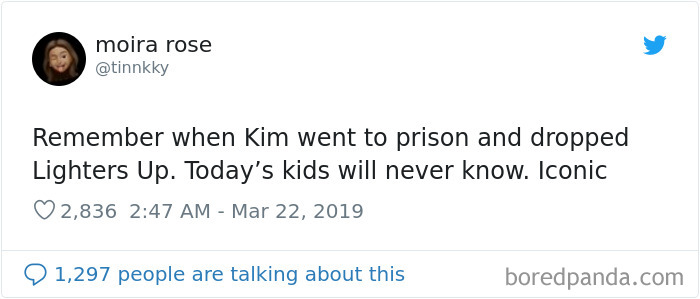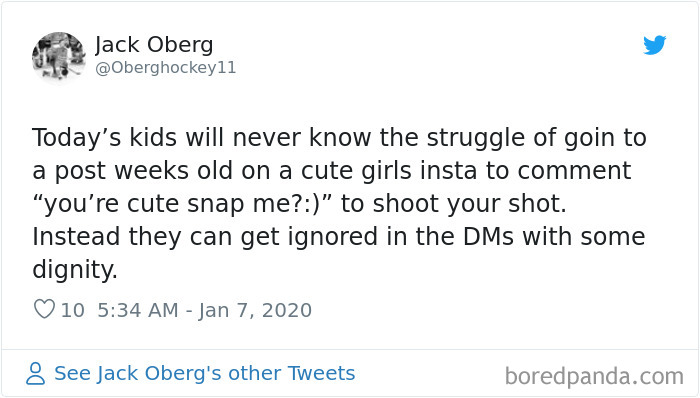One of the perks of growing up is getting a pass on lecturing the youth. Just look at the '90s kids. Every breath they take and every move they make, they'll be reminiscing about the good old days.However, it doesn't mean we have to hate on the fellas. Let's approach this as an anthropological study, why don't we? For example, if we were to fire up the Today's Kids Will Never Know tweets, we'd immediately get a whole depository of things that perfectly define those who were born in the past millenia. Like, the WordArt Gallery or some floppy disks. Don't know what I'm talking about? Continue scrolling and check it out for yourself.
This post may include affiliate links.
The '90s was an interesting era for music lovers. MTV helped return the hit single to prominence, however, people acquired new music mostly by buying CDs. Which usually meant paying for and getting the whole album. So if you heard a piece by an unknown band and wanted to own their songs, you were getting yourself into a bit of a gamble.
However, during the '90s, the CD reigned supreme. It became the biggest money-spinner the music industry had ever seen. “In the mid-90s, retailers and labels felt indestructible,” said Rob Campkin, who worked for HMV between 1988 and 2004. "It felt like this was going to last forever."
As the economy kept growing, annual global sales surpassed 1bn in 1992 and 2bn in 1996. The profit margins were incredible, too. The CD not only cost less to manufacture than vinyl, it was also cheaper to transport and stack in stores, while selling for up to twice as much. The prices kept growing even when the costs started shrinking. “It was simple profiteering,” said Stephen Witt, whose new book How Music Got Free chronicles the industry's vexed relationship with the MP3. “[Labels] would cut backroom deals with retailers not to let the price drop. The average price was $14 and the cost had gotten down almost to a dollar, so the rest was pure profit.”
Not only was it a good release of emotions, but there was also no Messenger. No Skype. No nothing. The other person couldn't bombard you with texts to prolong the argument. And if they tried to call you back, you could always unplug the phone!
One of my friends always ended a call by saying “what sound does a truck make” then you would hear the hang up tone “beep beep beep beep” like a truck reversing.
In the early '90s, dial-up internet access was limited to 56 kbps modems connecting via phone lines. At this speed, a low-quality song (about 3.5MB) took around 10 minutes to download at full speed. If you think that's a lot, there were times when the speed was slower and it took somewhere around 30 minutes to a few hours. A 700mb low-quality movie took about 28 hours at full speed or 3-5 days at low speed. And since the connections weren't that stable, looking at the 'estimated time' graph of a download was like going on an emotional roller coaster ride.
i use to start the transfer in the night before going to sleep and it used to be still going on in the morning
Even though the mobile phone was invented in the 1970s, it took a couple of decades until it became more practical and gained popularity outside the business circle. Think about it, in 2018, there are 123.7 mobile cellular subscriptions per 100 people. In 1995, this number was 12.7. The phone was a possession of the family, not a thing of the individual. So when you called a friend, a lot of the time you had to get through their parents first!
Before adopting video on demand and video streaming services such as Netflix, people got their movies from rental stores. However, these places generally had limited supplies of new releases so whenever you wanted to watch a new blockbuster, you had to beat the competition of the whole neighborhood. Which often came down to being really lucky or knowing one of the clerks or owners.
The cassette tape was developed by Philips in Hasselt, Belgium, and introduced in September 1963. It stored typically 30 or 45 minutes of audio per side and peaked in Western Europe and North America in the 1980s. People still used them in the early 1990s, however, it was soon overtaken by the CD.
Or the hilarity of playing the cassette tapes fast and making everyone sound like chipmunks.
WordArt is a Microsoft Office text-styling utility which allows users to stylize text with various "special effects" such as textures, outlines, and many other manipulations. When presenting our printed projects, me and my classmates would constantly try to impress one another by making the title as wicked as possible. We'd put shadows under the letters, bend or stretch them, that kind of thing.
It takes a while until you figure out how the legendary single-player puzzle video game works. The objective of the game is to clear a rectangular board containing hidden "mines" without detonating any of them, with help from clues about the number of mines in each neighboring field. Even though the game was created in the 1960s, and it is still written for many computing platforms in use today.
lol after 20 years i think i finally know how this game works lol
Adding text messaging to mobile devices began in the 1980s, while the first SMS message was sent in 1992 over the Vodafone GSM network in the UK. The initial growth for SMS was slow. The average American user sent only 0.4 texts per month in 1995. However, as phones and networks adapted to better accommodate the service, people started using it more and more. By 2000, that average number increased to 35.
Short messages can be encoded using a few alphabets: the default GSM 7-bit alphabet, the 8-bit data alphabet, and the 16-bit UCS-2 alphabet. Depending on which alphabet the subscriber has configured in the handset, this leads to the maximum individual short message sizes of 160 7-bit characters, 140 8-bit characters, or 70 16-bit characters.
In a time where only half of adults in America were using the Internet (not to mention neither Skype nor Facebook existed), SMS was the preferred method on instant messaging, and since each and every message cost money, you had to get creative with the way you phrased your words to minimize the number of characters needed to get your thoughts across.
Portable CD players became popular in the 1990s when the anti-skip technology was introduced.
Even though Sony's first portable CD player, the Discman D-50, came out in 1984, it wasn't profitable. However, as the product gained popularity, it soon became profitable, and Sony began to create a portable CD market. The Discman range was later named CD Walkman.
Other manufacturers soon followed in Sony’s footsteps and started offering their own portable CD players, but these devices really took off in 1997 because of Electronic Skip Protection, making possible heavy usage.
then closing your eyes or turning away so that u dont see any of it
These tiny pencils (and all similar writing implements) were all the rage at one point in time. And it seemed like everybody at school had at least one. They were fun to play around with because you could take off the topmost pencil or pen and put it on the bottom, pushing the whole stack upward.
However, there was a slight hitch to the design. Losing just of the mini-pencils meant that you couldn’t write with them without pushing the pencil lead inside.
Not every few days, but once a couple of weeks more like. Most computer mice used to have rubber balls instead of lasers to determine the position of your mouse pointer in relation to the mouse’s position on your table.
Tables get dusty. The dust gets on the ball. The dust gets inside your mouse. You have to get the dust out of the mouse. You put the dust on the table. And the entire process repeats itself until the invention of laser mice. There was always something oddly satisfying about cleaning your mouse.
That’s probably why our compute mice didn’t last long, they never got cleaned lol.
Nowadays, calling someone, texting them, and using the internet is incredibly cheap. But, boy, were phone bills a lot bigger back in the day! There were loads and loads of different plans tailored to different customers. But plenty of them offered unlimited calls/texts/internet after a certain hour at night.
Haha, I remember when my first mobile had the offer free, first 20 mins from 7pm-7am from Optus to Optus. I used to chat to a friend for 19 mins, hang up, then call back, then talk for another 19 minutes, so on and so forth.
Most of us used to have humongous videotape libraries at home. With the advent of the DVD era, sadly, we had to let go our bulky tapes because of how space they took up. Videotapes have a certain aesthetic quality that discs can hardly beat, though.
However, did you know that the videotapes that we’re used to could have looked slightly different? In the late 1970s and 1980s, the so-called videotape format war raged between the Video Home System (VHS) and Betamax format videotapes and recorders. VHS won, but sadly, it’s now being forgotten.
I used to own a few hundred videos, was so pissed when VCR’s were replaced and I had to get my movies in DVD form.
Nearly everyone knows the face of Ronald McDonald the clown. But way back in the past, he used to be just one of a huge cast of McDonald’s characters, including Grimace, the Hamburglar, Birdie the Early Bird, Mayor McCheese, and others.
For those of us born in the 90s, they were every bit as important as Ronald McDonald!
The internet used to be expensive and far from every vehicle had a GPS (those cost some serious mega-bucks back in the day). So if you needed directions to get to somewhere from your home, you’d look the info up online, then print the directions out.
It was a modern way of getting a physical copy of a detailed map with directions. Of course, nowadays, all we have to do is turn on a map app on our phones. Though some of us still prefer using huge maps that unfold to be larger than us.
Personal mobile phones weren’t a thing back then (unless you were in the military or were an extremely successful businessman). So when we needed to call a friend, we’d dial their stationary phone. And who’d usually pick up the receiver than your pal’s parents?
When you’re a kid, it’s terrifying speaking to an adult because you start thinking all sorts of weird thoughts. Am I wasting their time? Am I going to get my friend into trouble for a larger telephone bill?
Or the sheer terror of answering the phone because you had no idea who was calling.
Here's something that might just blow your mind: Netflix used to be a DVD-by-mail company! What's more, it still is for a staggering 2.7 million US subscribers.
"The familiar red envelopes have been arriving in customers' mailboxes since 1998 and helped earn the company a healthy $212 million profit last year," writes CNN. Truly unbelievable.
Using iPods to find specific songs was a bit of a hassle because there was no CTRL+F-style search function. Imagine what a pain in the neck it was if you had a music collection composed of thousands of songs!
Some of us [cough, cough] still use iPods to this very day, disdain Spotify, and think that taking more than a few seconds to find the song that you want is no big deal. But that’s just an opinion.
I still have one of those. It is the pink one. My family gave everyone one.
Floppy disks! Diskettes! Floppies! Oh boy, do we miss those! Some early computer games, demos, and shareware came on these babies and we’d go swapping them with all of our pals. We didn’t need the internet to have a truly communal experience when playing video games.
Some of us might also still have a huge number of floppy disks back at home and miss having a floppy drive installed on our PC.
Internet piracy used to be different in the past. Some people relied on peer-to-peer file-sharing clients like LimeWire to get access to files, including songs. However, downloading songs like this took a long time and was quite a hassle.
And no mention of piracy should go without reminding you of the "Piracy, It's a Crime" ads that we still love to watch every once in a while.
Nearly all video game stores had one or two consoles hooked up to TVs near the ceiling. It was a blast trying the demo games out. Especially if you didn’t have that particular console at home. After all, they were expensive as heck! As were the games themselves. And not every parent was up to buying their kids whatever awesome/violent/gory game they had their hearts set on.
Gamecube, i miss you, your perfectly measured controls, your beautiful little disks..
Chonky game cartridges may be a thing of the past, but there are plenty of retro gamers out there who specifically collect them.
But the problem with cartridges is that dust gets inside them over time. So if your game stopped working, it was time to take it out of your console and blow all the dust out.
I used to do this way back in my Atari 2600 cartridges and I can testify it really worked
I spent hours creating my profile and away message with song lyrics. I thought I was so deep.
Lots of people feel nostalgic when they think back to the times when they used their very first chat rooms. From Yahoo Messenger to Hotmail chat rooms and others, there were plenty to choose from and they offered some people their first taste of what it was like communicating with people on the internet.
The GameBoy Advance SP was awesome! It was like the GameBoy Color and the GameBoy Advance had a kid together and it was mega-cool. It was similar to a flip phone in the sense that you could close the screen.
But the other cool thing was that you could slightly tilt the screen back which made it easier to play when you were lying in bed. Unfortunately, what most longtime GameBoy Advance SP owners had in common was that the back of the screen would get lots and lots of scratches with use.
I'm 56 & we had ankle socks. But I hated before stretchy socks, your shoes would eat the back of your socks. Had to pull them out of the back of your shoe all the time.
And at first even dial up was pretty fast, because there were so few people with computers in their homes.
Context, it's a shiny Football Sticker. It was one of the school fads buying/collecting. Much like other trading card games throughout the years, which is why like most of these pictures the "today's kids" would understand because there's equivalent thing for their times. There's literally lego trading cards from Sainsbury's kids go mad over and have trading clubs for. And the obvious Pokemon, magic and yugioh cards people have been collecting this whole time but they at least have some use other than you filled your sticker book
Or taping a song from the radio and the beginning of it getting ruined because the DJ was still talking over it!
Today's kids will never know a book report ment going to the library (or ur parents encyclopedia collection 20 years out of date)
Don't forget the index card systems that made it so fun to figure out which books to look in...
Load More Replies...Todays kids will never know the joy of being able to stay at your friends house all summer and that your mom's most efficient way to get you home was to lean out the front door and yell your name to the neighborhood.
My grandma used to always yell, "HEEEE!!!" across the woods and we would all come running!
Load More Replies...Or taping a song from the radio and the beginning of it getting ruined because the DJ was still talking over it!
Today's kids will never know a book report ment going to the library (or ur parents encyclopedia collection 20 years out of date)
Don't forget the index card systems that made it so fun to figure out which books to look in...
Load More Replies...Todays kids will never know the joy of being able to stay at your friends house all summer and that your mom's most efficient way to get you home was to lean out the front door and yell your name to the neighborhood.
My grandma used to always yell, "HEEEE!!!" across the woods and we would all come running!
Load More Replies...
 Dark Mode
Dark Mode  No fees, cancel anytime
No fees, cancel anytime 




